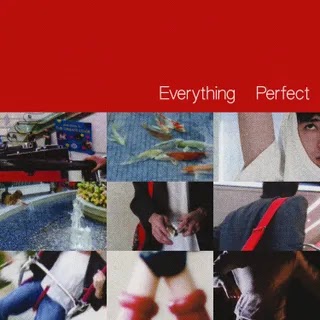The band’s new live double LP is an exceptionally accomplished and generous look back at their evolution from shy indie darlings to touring powerhouse.
It's been 24 years since Belle and Sebastian emerged from the Glasgow underground, clutching a surfeit of near-perfect songs. Their classic first and second LPs, Tigermilk and If You’re Feeling Sinister, established frontman and principal songwriter Stuart Murdoch as a generational talent, a writer who intuitively wedded the forensic character studies of Joni Mitchell to the chamber music of early John Cale, lending a Dylan-esque sophistication to the Sarah Records bands that were his sonic progenitors.
Ever since then, they’ve endured personnel changes, sonic reinventions and on occasion, hurt feelings beyond repair. And yet they endure, having lasted a decade-and-a-half longer than the Beatles, Velvets, or Smiths. On the new double live LP What to Look for in Summer, some of it recorded over three days on a cruise ship in August of 2019, the group thrillingly undertakes the business of excavating their long, complicated history.
In their infancy, Belle and Sebastian shows were charming but anguished affairs: a studio creation fighting to meet the challenge of sound people, monitors, and audiences. What a difference half a lifetime makes. Any trace of that old anti-professionalism is the outlier here—lead guitarist Stevie Jackson’s playing is Mike Bloomfield-worthy, and longtime members Richard Colburn, Sarah Martin, Chris Geddes, and Bobby Kildea form a rock-solid unit operating at David Bowie levels of showmanship.
Following a traditional Scottish fanfare, What to Look for in Summer breaks out of the gate with a romp through the 1998 highlight “Dirty Dream Number Two” and a delightfully glammed-up take on the 2003 single “Step Into My Office, Baby.” Both convey a spirit that is nostalgic without being maudlin. Although the band has been making reliably good-to-great records up until this day, the bulk of the material centers on their early classics, as befits any band with a quarter-century legacy.
What to Look for in Summer consciously fashions itself after immersive, almost comically overstuffed concert albums like Neil Diamond’s 1972 Hot August Night or Thin Lizzy’s 1978 double set Live and Dangerous. At a time when attention spans are increasingly trained towards 20-second videos, imposing slabs of vinyl like these are increasingly artifacts of an earlier era. It may be a rearguard war, but throughout its one hour and forty-minute run-time, it’s an exceptionally accomplished and generous one.
A marvelous reading of the 2006 track “Funny Little Frog” sounds like Randy Newman and Harry Nilsson fighting for a melody and lyric and ending in a double disqualification. “My Wandering Days Are Over”—dedicated to ex-bandmate Isobel Campbell—is a delicate wonder, actualizing the outlaw country impulses only hinted at in the studio version. There's also a great, cathartic rip-through the title track to The Boy With the Arab Strap, a symphony of Al Green grooves, recorder solos, and social realism that brings together all of Murdoch’s preoccupations into a tuneful eight-minute monologue on dancing, philosophy, public transportation, and sex toys: It’s the ‘90s indie “Tangled Up in Blue.”
It’s something of a cheerful paradox that for all of the surpassing intimacy of Belle and Sebastian’s deeply personal music, it has fostered a devoted fan base and a profound sense of community between group and followers. Most of all this is what to expect from What to Look for in Summer. The songs sound great, but the easy on-stage banter and joyful communion with the audience sounds even better. Shut-ins of the world, unite and take over.







%20Music%20Album%20Reviews.webp)








0 comments:
Post a Comment